What do you do when an unstoppable, 2,000-degree plume of lava is inching toward your town? Walk for your life—quickly.
That’s what’s happening on the Big Island of Hawaii this week, as residents of Pahoa calmly come to terms with the fact that their town will soon be changed forever by a neighboring volcano. It appears the first structure has already been claimed, as of early Tuesday morning, Hawaii time.
According to Hawaii County Civil Defense, local residents have been placed on an evacuation advisory as of Monday evening, and roads are closed (in anticipation of them being engulfed as well).
In the last few days, as it approached Pahoa, the lava engulfed a cemetery with markers dating back to 1905, the final resting place of dozens of first-generation Japanese immigrants who came to Hawaii as plantation workers. Hawaii Public Radio has a moving segment about local residents making peace with the fact that they’ll never be able to visit the graves there again.
According to a Tuesday morning (Hawaii time) update, the lava flow was advancing at an average rate of about 5 yards per hour. The town of Pahoa itself, population 945, could be largely cut off from the rest of the Big Island as early as Wednesday, when the lava should overtake the main road. Thousands more people live further downhill of Pahoa, should the lava make it that far over the coming days.
On a conference call with reporters Monday, Hawaii County director of civil defense Daryl Oliveira said, “it looks like it’s inevitable that the flow will be coming into the community.” According to CNN, the town is preparing to be overrun. The local government has “rebuilt two gravel roads to give residents escape routes from the lava flow. Power company crews are installing new 70-foot-tall poles with heat resistant protection to raise cables higher off the roads.”
The lava is flowing downhill toward the ocean from the Kilauea volcano, which has been erupting continuously since 1983. (Slate’s own Phil Plait visited the volcano just last month and captured some breathtaking photos.)
Normally, lava from Kilauea takes a short path southward, where it ends up quickly crystalizing in seawater. On June 27 of this year, however, a new plume turned toward the north and has been encroaching on the town of Pahoa ever since.
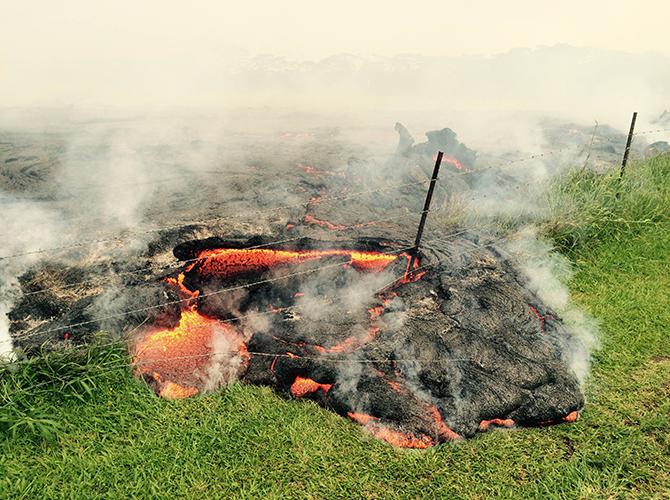
This weekend, the lava engulfed a pasture on the edge of town.
Photo courtesy USGS
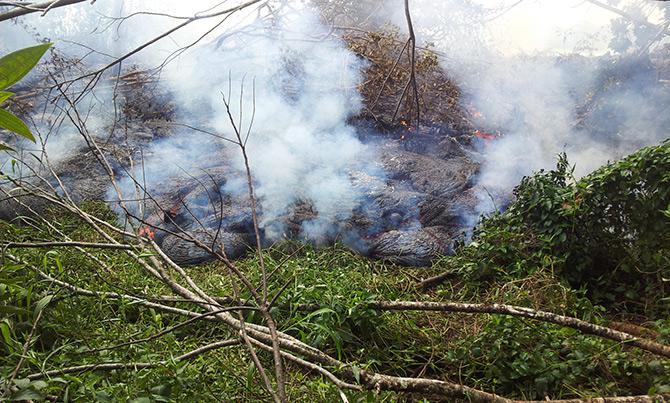
As it advances, the lava crackles and pops as it burns vegetation.
Photo courtesy USGS
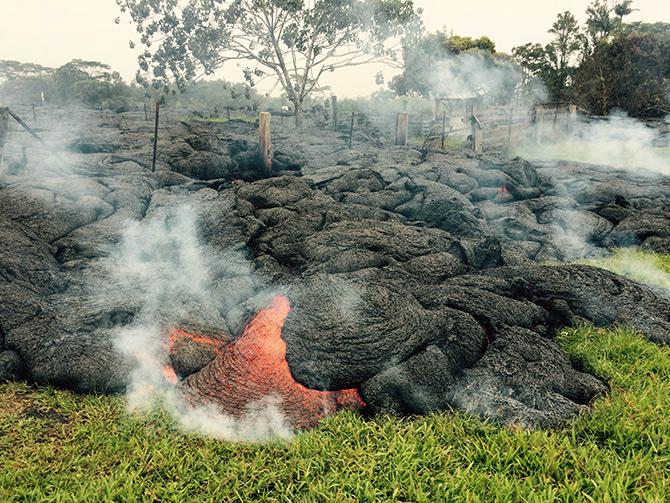
This weekend, the lava buried a century-old cemetery with graves of first-generation Hawaiian immigrants.
Photo courtesy USGS
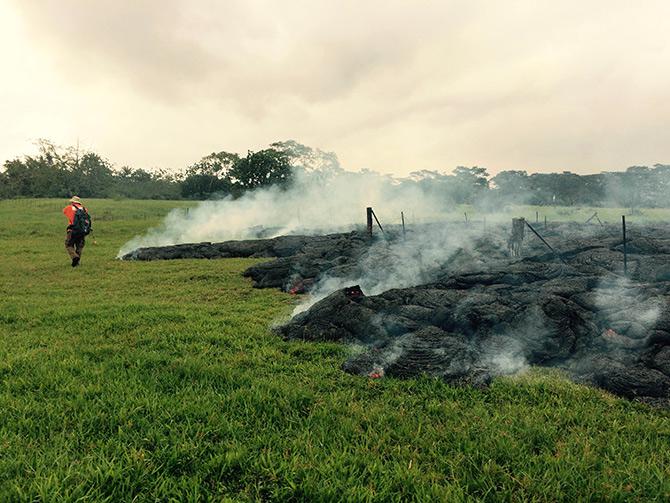
USGS geologists continually monitor the lava and track its forward progress.
Photo courtesy USGS
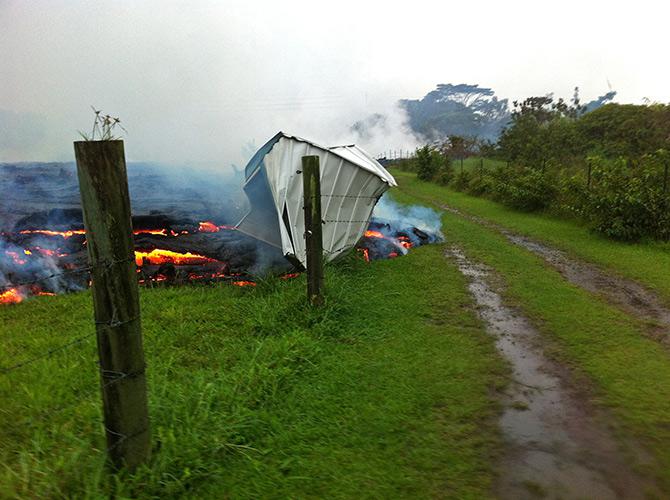
On Saturday, the lava burned this shed.
Photo courtesy USGS
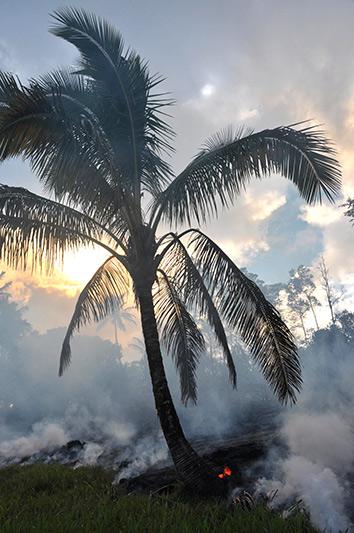
Photo courtesy USGS
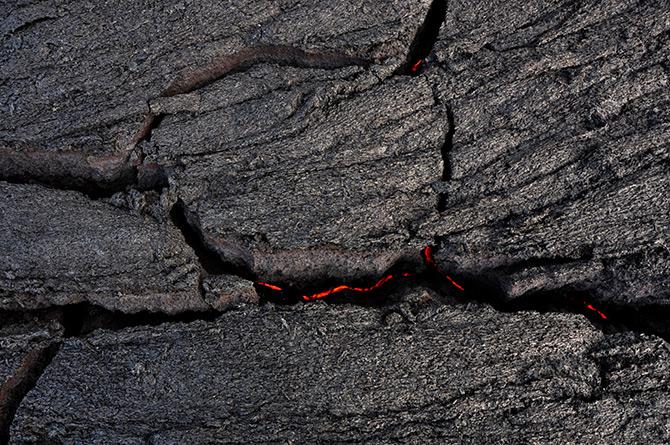
The lava flow is driven by a continual supply of molten rock just beneath the black crust, which rises and cracks as it is driven upward from below.
Photo courtesy USGS
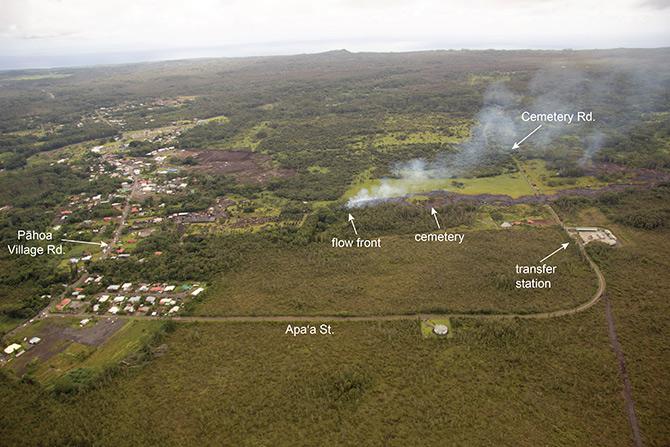
As of Monday, the lava was just a few football field lengths away from the center of town, a distance it was expected to cover in a day or so.
Photo courtesy USGS

An aerial thermal image showed the lava’s heat as it neared the town of Pahoa.
Photo courtesy USGS
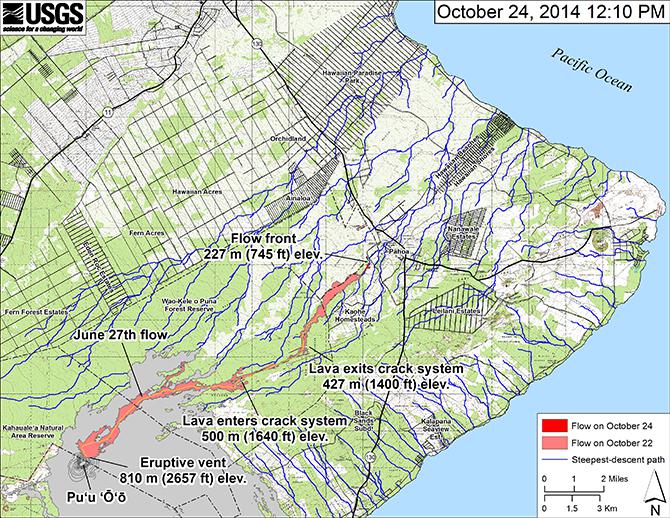
A map from the USGS shows the lava plume from its source at the Pu’u ‘O’o vent of the Kilauea volcano, about 12 miles away.
Photo courtesy USGS
This weekend, a drone overflight showed the lava plume before it engulfed the cemetery:
By Monday, the lava had crackled its way closer to town:
A USGS overflight on Monday showed the lava approaching the center of town:
